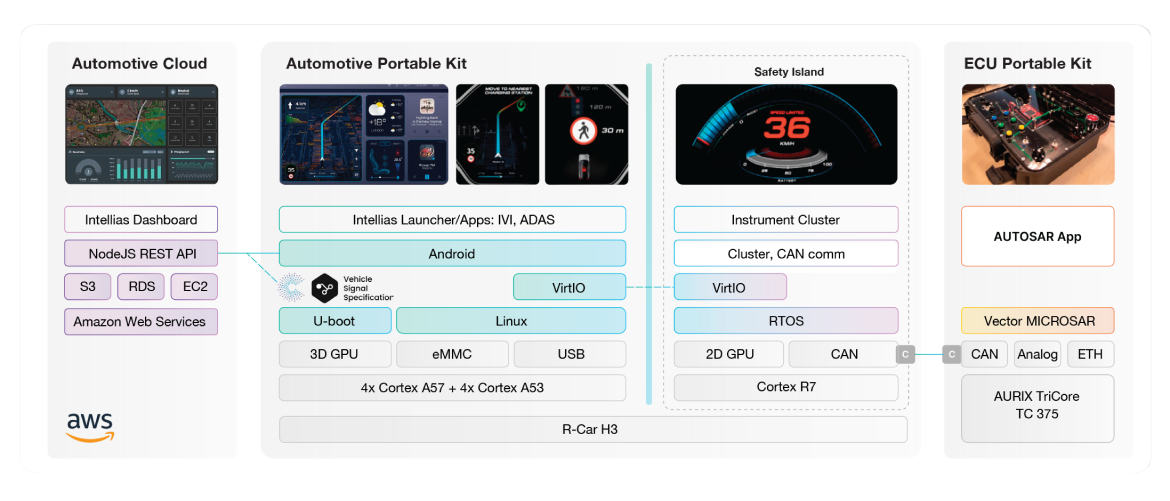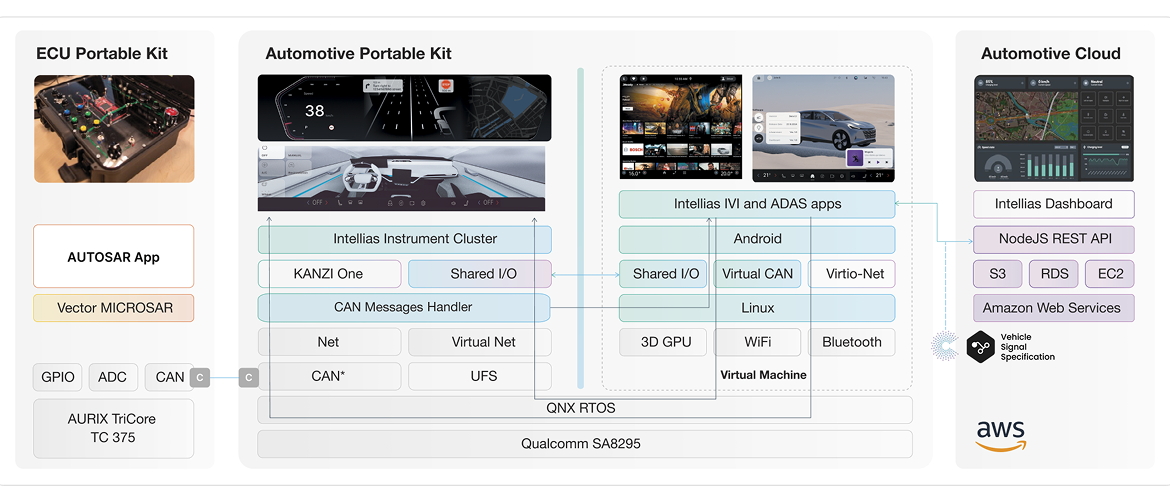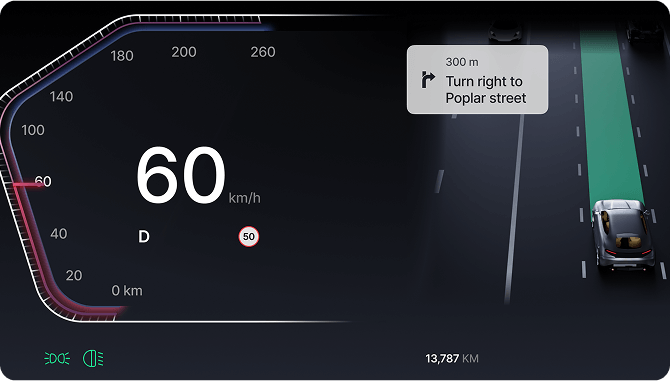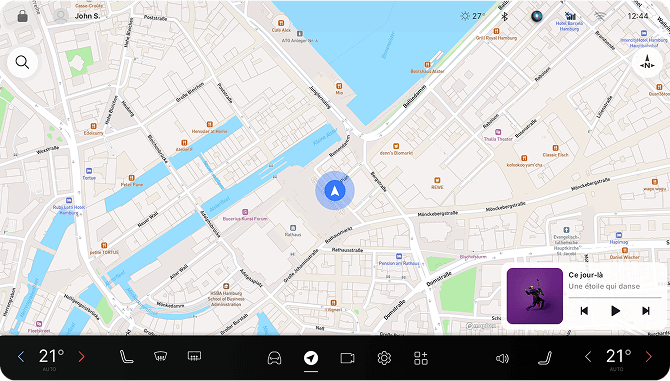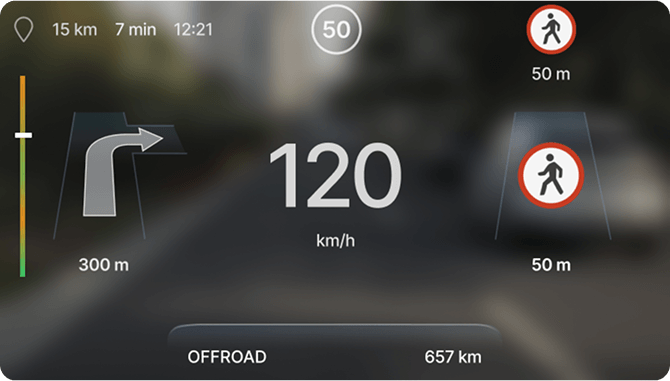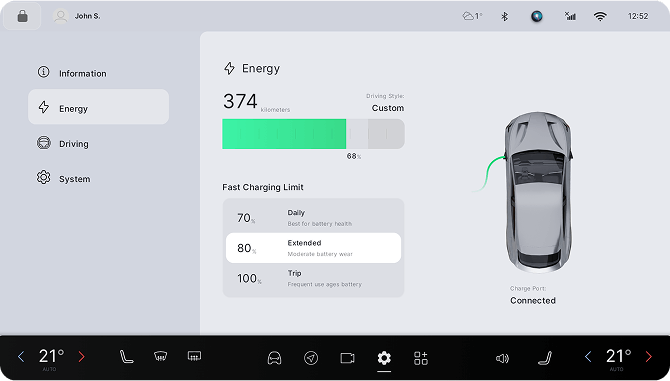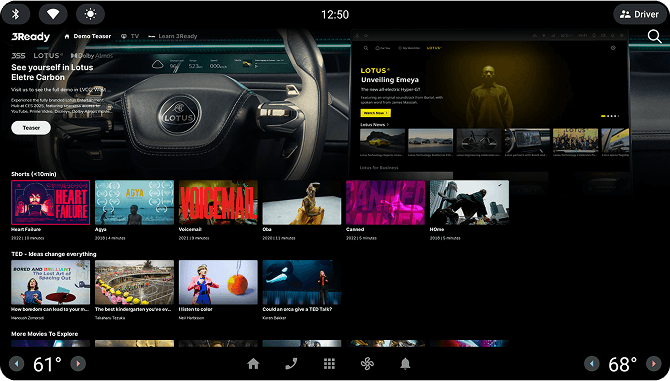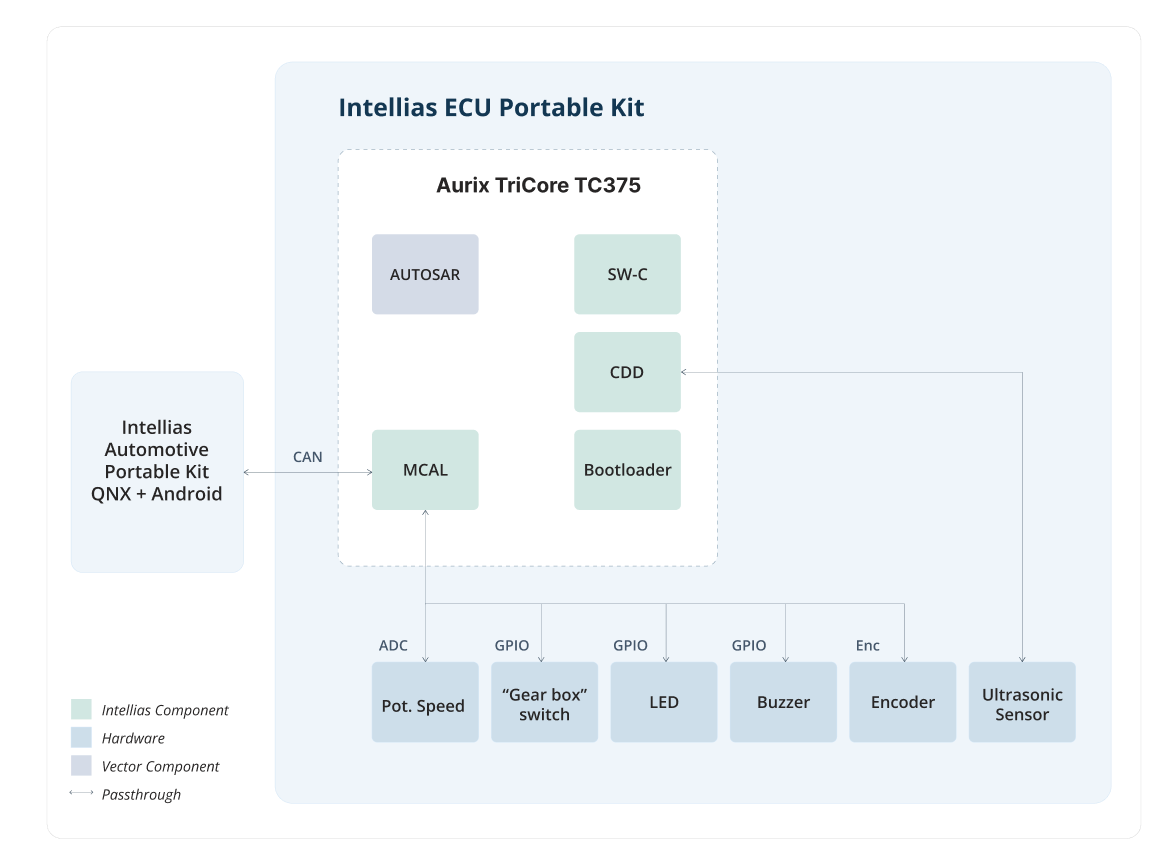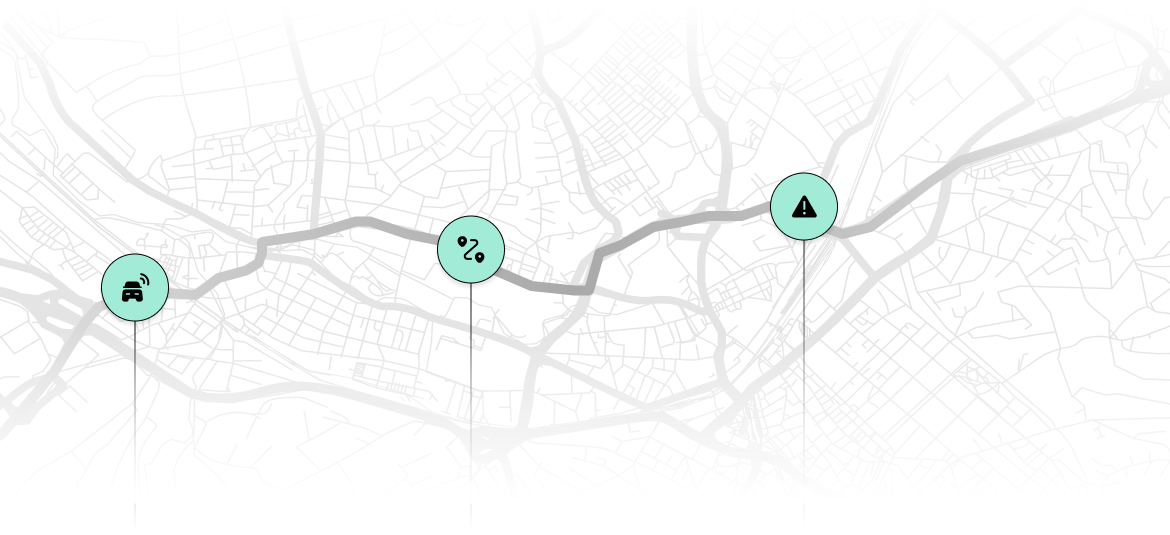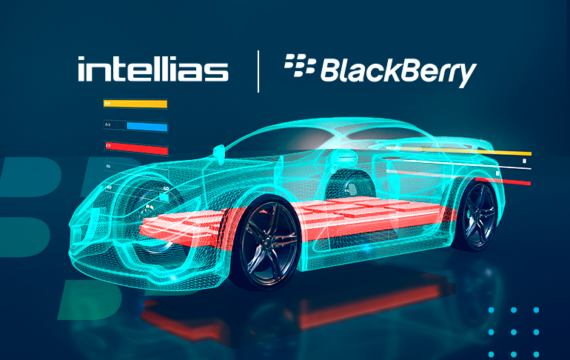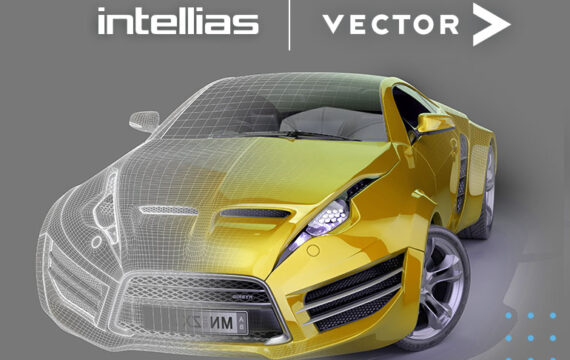IntelliKit includes an integrated mini map and a variety of gauges that display information such as speed, acceleration, battery level, regenerative braking, mileage, time and range. Users can also try ADAS functions like digital mirrors, road signs, lane assistance and obstacle and pedestrian detection. The demo indicates the driving mode along with the state of fog lights, headlights, seatbelts, airbags, ESP and ABS systems, the engine, hazard warning lights, body lights and turn signals.
Intellias Partners with BlackBerry to Leverage the Power of the BlackBerry IVY Platform
